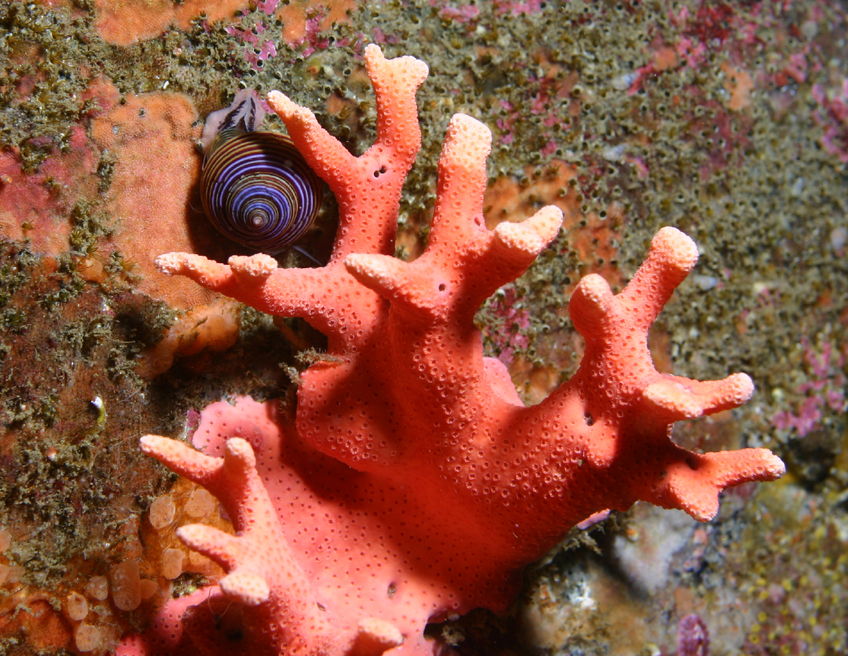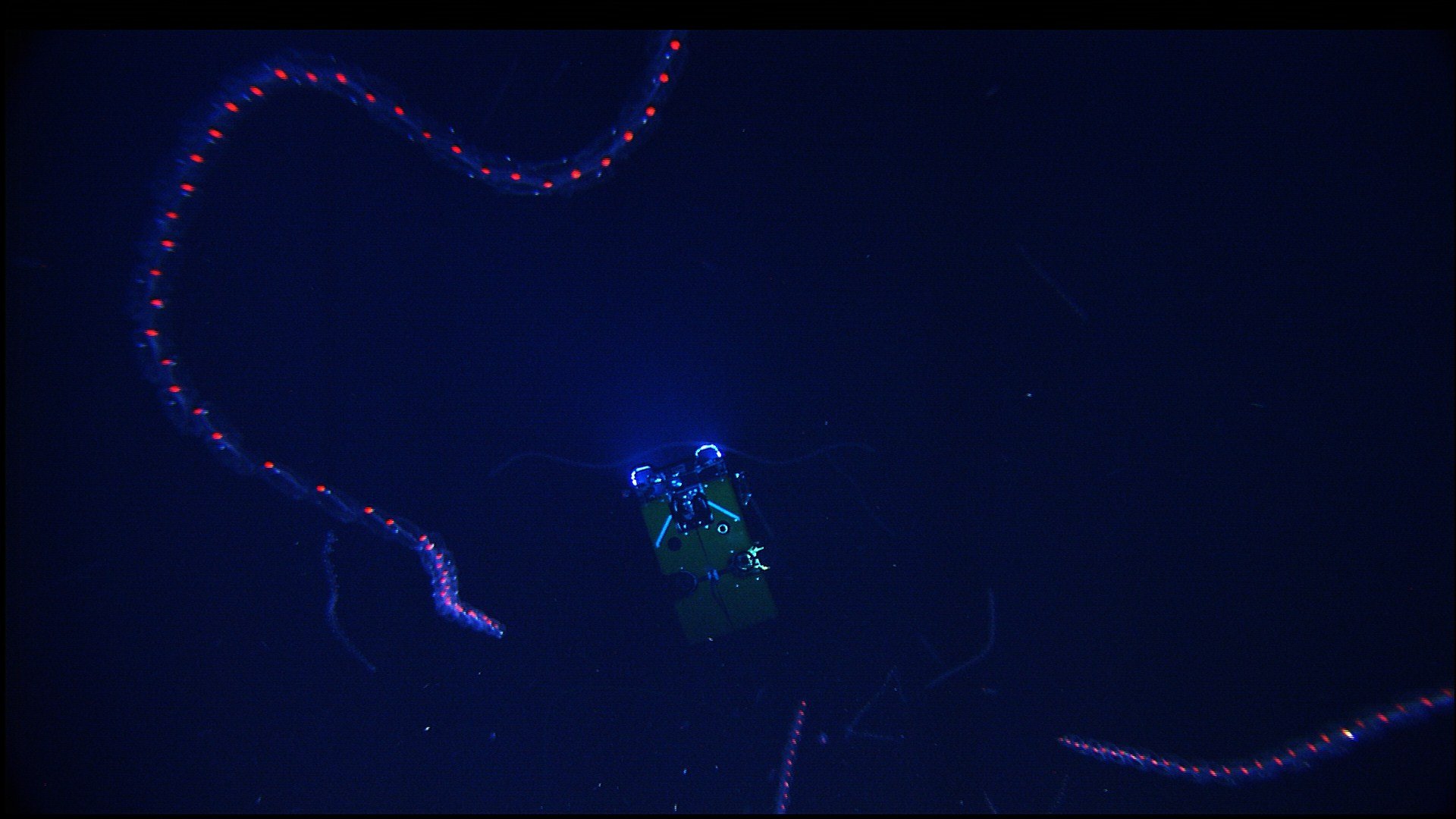|
Hydrozoans
Hydrozoa (hydrozoans; ) are a taxonomic class of individually very small, predatory animals, some solitary and some colonial, most of which inhabit saline water. The colonies of the colonial species can be large, and in some cases the specialized individual animals cannot survive outside the colony. A few genera within this class live in freshwater habitats. Hydrozoans are related to jellyfish and corals and belong to the phylum Cnidaria. Some examples of hydrozoans are the freshwater jelly (''Craspedacusta sowerbyi''), freshwater polyps ('' Hydra''), ''Obelia'', Portuguese man o' war (''Physalia physalis''), chondrophores (Porpitidae), "air fern" (''Sertularia argentea''), and pink-hearted hydroids (''Tubularia''). Anatomy Most hydrozoan species include both a polypoid and a medusoid stage in their lifecycles, although a number of them have only one or the other. For example, ''Hydra'' has no medusoid stage, while '' Liriope'' lacks the polypoid stage. Polyps The hydroid f ... [...More Info...] [...Related Items...] OR: [Wikipedia] [Google] [Baidu] |
Anthoathecata
Anthoathecata, or the athecate hydroids, are an order of hydrozoans belonging to the phylum Cnidaria. A profusion of alternate scientific names exists for this long-known, heavily discussed, and spectacular group. It has also been called Gymnoblastea and (with or without an emended ending ''-ae''), Anthomedusa, Athecata, Hydromedusa, and Stylasterina. There are about 1,200 species worldwide.Schuchert, P. (2014). Anthoathecata. Accessed through: Schuchert, P. (2014) World Hydrozoa database at http://www.marinespecies.org/hydrozoa/aphia.php?p=taxdetails&id=13551 on 2014-10-31 These hydrozoans always have a polyp stage. Their hydranths grow either solitary or in colonies. There is no firm perisarc around the polyp body. The medusae, or jellyfish, are solitary animals, with tentacles arising from the bell margin, lacking statocysts but possessing radial canals. Their gonads are on the manubrium ("handle").Bouillon, J.; Gravili, C.; Pagès, F.; Gili, J.-M.; Boero, F. (2006). An in ... [...More Info...] [...Related Items...] OR: [Wikipedia] [Google] [Baidu] |
Medusa (biology)
Jellyfish and sea jellies are the informal common names given to the medusa-phase of certain gelatinous members of the subphylum Medusozoa, a major part of the phylum Cnidaria. Jellyfish are mainly free-swimming marine animals with umbrella-shaped bells and trailing tentacles, although a few are anchored to the seabed by stalks rather than being mobile. The bell can pulsate to provide propulsion for highly efficient locomotion. The tentacles are armed with stinging cells and may be used to capture prey and defend against predators. Jellyfish have a complex life cycle; the medusa is normally the sexual phase, which produces planula larvae that disperse widely and enter a sedentary polyp phase before reaching sexual maturity. Jellyfish are found all over the world, from surface waters to the deep sea. Scyphozoans (the "true jellyfish") are exclusively marine, but some hydrozoans with a similar appearance live in freshwater. Large, often colorful, jellyfish are common in c ... [...More Info...] [...Related Items...] OR: [Wikipedia] [Google] [Baidu] |
Jellyfish
Jellyfish and sea jellies are the informal common names given to the medusa-phase of certain gelatinous members of the subphylum Medusozoa, a major part of the phylum Cnidaria. Jellyfish are mainly free-swimming marine animals with umbrella-shaped bells and trailing tentacles, although a few are anchored to the seabed by stalks rather than being mobile. The bell can pulsate to provide propulsion for highly efficient animal locomotion, locomotion. The tentacles are armed with Cnidocyte, stinging cells and may be used to capture prey and defend against predators. Jellyfish have a complex Biological life cycle, life cycle; the medusa is normally the sexual phase, which produces planula larvae that disperse widely and enter a sedentary polyp (zoology), polyp phase before reaching sexual maturity. Jellyfish are found all over the world, from surface waters to the deep sea. Scyphozoans (the "true jellyfish") are exclusively marine habitats, marine, but some hydrozoans with a simila ... [...More Info...] [...Related Items...] OR: [Wikipedia] [Google] [Baidu] |
Cnidaria
Cnidaria () is a phylum under kingdom Animalia containing over 11,000 species of aquatic animals found both in Fresh water, freshwater and Marine habitats, marine environments, predominantly the latter. Their distinguishing feature is cnidocytes, specialized cells that they use mainly for capturing prey. Their bodies consist of mesoglea, a non-living jelly-like substance, sandwiched between two layers of epithelium that are mostly one cell (biology), cell thick. Cnidarians mostly have two basic body forms: swimming Medusa (biology), medusae and Sessility (motility), sessile polyp (zoology), polyps, both of which are Symmetry (biology)#Radial symmetry, radially symmetrical with mouths surrounded by tentacles that bear cnidocytes. Both forms have a single Body orifice, orifice and body cavity that are used for digestion and respiration (physiology), respiration. Many cnidarian species produce Colony (biology), colonies that are single organisms composed of medusa-like or polyp (z ... [...More Info...] [...Related Items...] OR: [Wikipedia] [Google] [Baidu] |
Limnomedusae
Limnomedusae is an order of hydrozoans. Taxonomy The taxon was erected by Danish marine biologist Paul Lassenius Kramp in 1938 to accommodate certain families of hydrozoans with biphasic life histories. It includes genera with medusae with ecto-endodermal statocysts and with gonads alongside their radial canals, and also genera which have polyps that are not covered by a theca. Molecular analysis performed by Collins in 2006 has since shown that the Limnomedusae are not monophylic. The family Armorhydridae, which contains a single genus and a single species, '' Armorhydra janowiczi'', is found living in coarse sediment, has hollow tentacles and has no radial canals. It seems to share few morphological features with the other families and probably belongs elsewhere. The inclusion of Microhydrulidae is also dubious. The medusa stage is not known and the tiny polyp has no tentacles nor mouth. Systematic list The World Register of Marine Species currently lists the following ... [...More Info...] [...Related Items...] OR: [Wikipedia] [Google] [Baidu] |
Siphonophorae
Siphonophorae (from Greek ''siphōn'' 'tube' + ''pherein'' 'to bear') is an order within Hydrozoa, which is a class of marine organisms within the phylum Cnidaria. According to the World Register of Marine Species, the order contains 175 species thus far. Although a siphonophore may appear to be an individual organism, each specimen is in fact a colonial organism composed of medusoid and polypoid zooids that are morphologically and functionally specialized. Zooids are multicellular units that develop from a single fertilized egg and combine to create functional colonies able to reproduce, digest, float, maintain body positioning, and use jet propulsion to move. Most colonies are long, thin, transparent floaters living in the pelagic zone. Like other hydrozoans, some siphonophores emit light to attract and attack prey. While many sea animals produce blue and green bioluminescence, a siphonophore in the genus '' Erenna'' was only the second life form found to produce a red ligh ... [...More Info...] [...Related Items...] OR: [Wikipedia] [Google] [Baidu] |
Hydroidolina
Hydroidolina is a subclass of Hydrozoa and makes up 90% of the class. Controversy surrounds who the sister groups of Hydroidolina are, but research has shown that three orders remain consistent as direct relatives: Siphonophorae, Anthoathecata, and Leptothecata. Description and background The phylum Cnidaria contains two clades: Anthozoa and Medusozoa. There are around 3800 species within the clade Medusozoa and it consists of Cubozoans, Scyphozoans, and Hydrozoans. Hydroidolina are small predatory animals, ranging in 8-30 millimeters in size, exhibiting radial symmetry and are diploblastic (developed from two embryonic layers: ectoderm and endoderm). The classification below is based on the World Register of Marine Species: Subclass Hydroidolina * Order Anthoathecata * Order Leptothecata * Order Siphonophorae Distribution Hydroidolina are commonly found in a variety of marine environments across the world such as deepwater caves or brackish and fresh shallow waters, ... [...More Info...] [...Related Items...] OR: [Wikipedia] [Google] [Baidu] |
Trachylinae
Trachylinae (also Trachylina, Trachylinida, etc.) is a subclass of hydrozoans. It is placed at order rank in many older classifications, and limited to contain the Narcomedusae, Trachymedusae, the Actinulidae, then considered an independent order, and also the Limnomedusae which were traditionally placed in the paraphyletic " Hydroida". It is not entirely clear whether the Limnomedusae and the Trachymedusae as conventionally circumscribed are monophyletic The freshwater jelly '' Craspedacusta sowerbyi'' is a well-known member of the Limnomedusae and might thus belong here. Development Of the four orders: Narcomedusae, Trachymedusae, Actinulidae, and Limnomedusae, only Limnomedusae has any sort of polyp stage, and even then it is very tiny(less than 1mm) with no tentacles. This is uncommon for other jellyfish under the phylum cnidaria. These jellyfish also tend to have fewer cells during their embryonic and larvae A larva (; plural larvae ) is a distinct juvenile form ... [...More Info...] [...Related Items...] OR: [Wikipedia] [Google] [Baidu] |
Leptothecata
Leptothecata, or thecate hydroids, are an order (biology), order of hydrozoans in the phylum Cnidaria. Their closest living relatives are the athecate hydroids, which are similar enough to have always been considered closely related, and the very apomorphic Siphonophorae, which were placed outside the "Hydroida". Given that there are no firm rules for synonym (biology), synonymy for high-ranked taxa, alternative names like Leptomedusa, Thecaphora or Thecata, with or without the ending emended to "-ae", are also often used for Leptothecata. Leptothecata is surrounded by a chitinous outer layer as its exoskeleton, including gonophores, their reproductive organ. Leptothecata obtain radial symmetry, in which their gonads can be found in their radial canals. Their morphological characters normally have ranged from benthic to planktonic stages. Characters associated with benthic are the polyps and colony forms, while planktonic is medusae. Leptothecata has a vast and complex variation a ... [...More Info...] [...Related Items...] OR: [Wikipedia] [Google] [Baidu] |
Obelia
''Obelia'' is a genus of hydrozoans, a class of mainly marine and some freshwater animal species that have both polyp and medusa stages in their life cycle. Hydrozoa belongs to the phylum Cnidaria, which are aquatic (mainly marine) organisms that are relatively simple in structure with a diameter around 1mm. There are currently 120 known species, with more to be discovered. These species are grouped into three broad categories: ''O. bidentada'', ''O. dichotoma'', and ''O. geniculata''. ''O. longissima'' was later accepted as a legitimate species, but taxonomy regarding the entire genus is debated over. ''Obelia'' is also called sea fur. ''Obelia'' has a worldwide distribution except the high-Arctic and Antarctic seas. and a stage of ''Obelia'' species are common in coastal and offshore plankton around the world.Cornelius, P.F.S., 1995b. North-West European thecate hydroids and their Medusae. Part 2. Synopses of the British Fauna (New Series), No 50. ''Obelia'' are usually ... [...More Info...] [...Related Items...] OR: [Wikipedia] [Google] [Baidu] |
Actinulida
Actinulida are an order of hydrozoans in the subclass Trachylinae Trachylinae (also Trachylina, Trachylinida, etc.) is a subclass of hydrozoans. It is placed at order rank in many older classifications, and limited to contain the Narcomedusae, Trachymedusae, the Actinulidae, then considered an independent or .... Very small, medusoid Hydrozoa without polyp phase, living in the sand interstitial, solitary, bell entirely or very much reduced, epidermis ciliated, 1-2 whorls of tentacles, statocysts present or not, club shaped and derived of ecto- and entodermal tissue; cnidome may include stenoteles. References Cnidarian orders Trachylinae {{Hydrozoa-stub ... [...More Info...] [...Related Items...] OR: [Wikipedia] [Google] [Baidu] |
Narcomedusae
Narcomedusae is an order of hydrozoans in the subclass Trachylinae. Members of this order do not normally have a polyp stage. The medusa has a dome-shaped bell with thin sides. The tentacles are attached above the lobed margin of the bell with usually a gastric pouch above each. There are no bulbs on the tentacles and no radial canals. Narcomedusans are mostly inhabitants of the open sea and deep waters. They can be found in the Mediterranean in large numbers. Feeding Behavior Narcomedusae use their tentacles to catch large, fast-moving prey. They do this by holding their tentacles perpendicular to the direction they are swimming to cover a larger area. If something is caught they bend the tentacle inwards and coil them at the tips to their mouths. References Gallery File:Aeginura grimaldii by Haeckel.png, ''Aeginura grimaldii'' by Ernst Haeckel Ernst Heinrich Philipp August Haeckel (; 16 February 1834 – 9 August 1919) was a German zoologist, naturalist, eugenici ... [...More Info...] [...Related Items...] OR: [Wikipedia] [Google] [Baidu] |





